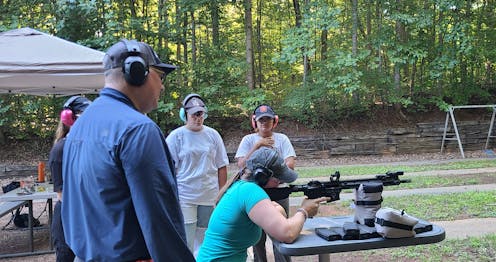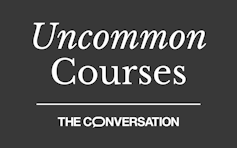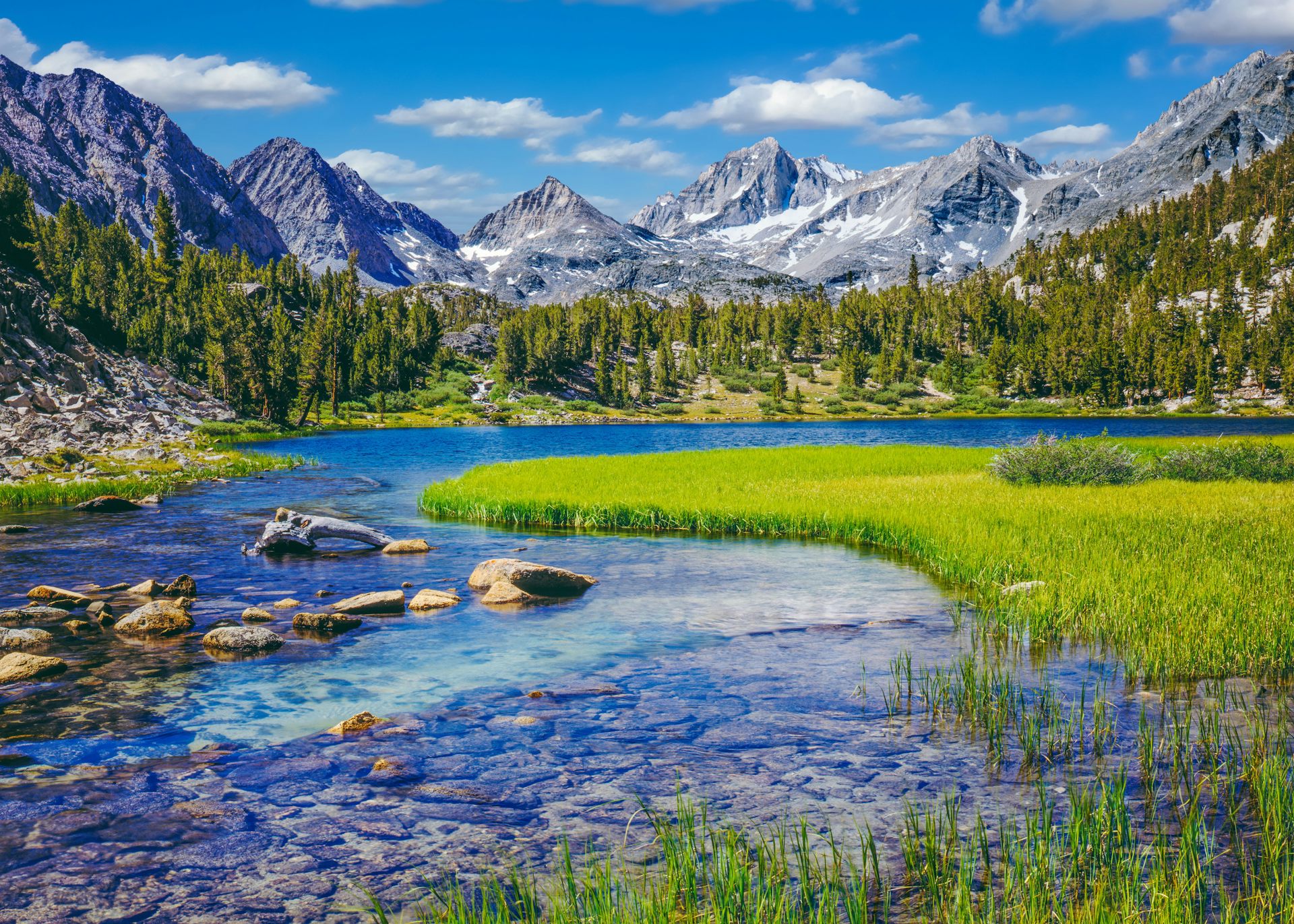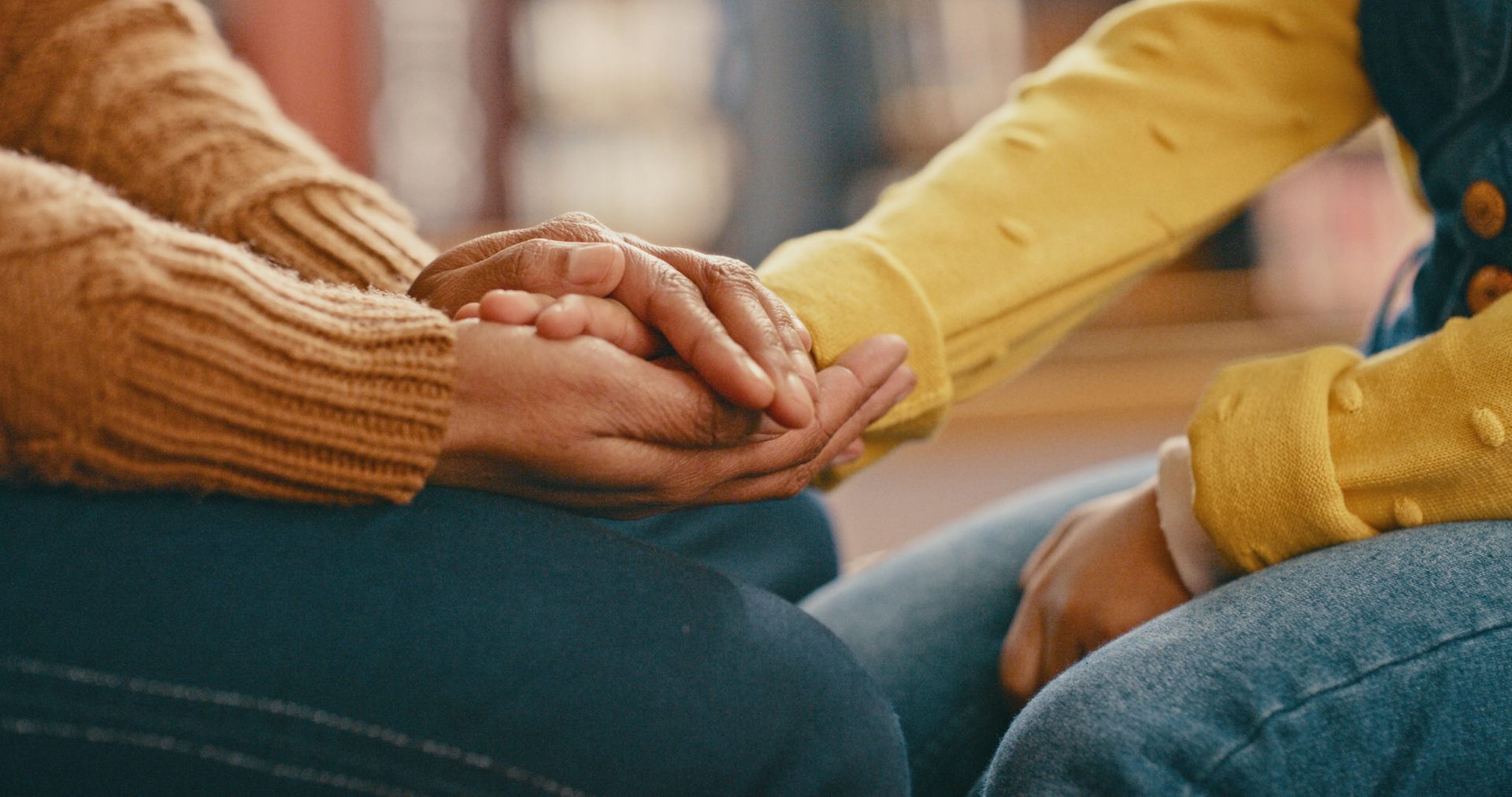Taking students to the range to learn about gun culture firsthand
In this course, a gun range becomes a classroom for students to explore their previously held beliefs about firearms.


Uncommon Courses is an occasional series from The Conversation U.S. highlighting unconventional approaches to teaching.
Title of course:
“Sociology of Guns”
What prompted the idea for the course?
I grew up in the liberal culture of the San Francisco Bay Area and never touched a firearm until I was 42 years old, living in North Carolina and teaching sociology at Wake Forest University.
For the past 10-plus years I have been deeply immersed in American gun culture both professionally and personally. I have both studied and am a member of the Liberal Gun Club, National Rifle Association and other gun-related groups.
Having one foot outside and one foot inside gun culture allows me to see the social life of guns from different perspectives. Wanting to convey this diversity to others prompted me to construct and teach this course for the first time in 2015. This fall, I will teach the course for the ninth consecutive academic year.
What does the course explore?
Rather than focusing exclusively on gun violence and politics, my course looks more broadly at guns in society.
The class begins by literally putting firearms in students’ hands.
The first class meeting is at a gun range, where students have the opportunity – but are not required – to shoot three semi-automatic firearms: a .22 pistol, a Glock 17 9 mm pistol and an AR-15 style .223 caliber rifle. The field trip is a source of insight that carries through the entire semester.
Substantively, the course builds on the students’ firsthand experience of guns by exploring the multifaceted role they play in society. It puts guns in historical, legal and global contexts. The intention is to provide students with a greater understanding of the lawful possession and use of guns, gun crime and injuries, and the future of gun politics.
Guest speakers vary from semester to semester but include leaders of various gun owner groups, professional gun educators and trainers, and representatives of gun violence prevention organizations.
Why is this course relevant now?
It often feels as though the United States is being torn apart by cultural and political divisions over guns. As Mark Joslyn argues in “The Gun Gap,” the different social worlds inhabited by gun owners and non-owners shape not just their fundamental orientations to guns, risk and policy, but their very understanding of what constitutes a good society.
I believe that we as a society cannot repair this divide until people begin to talk to each other about their differences with the goal of mutual understanding. These conversations should be built on a solid foundation of empirical knowledge about the role guns actually play in society - both positive and negative.
What’s a critical lesson from the course?
The trip to the gun range stands out because it offers direct exposure to gunfire. As expected, student responses vary. Most enjoy it. Some dislike it. No one is indifferent. All are better able to relate to the course material because of it.
In particular, those who were personally repulsed by guns prior to the field trip often come to see why guns can be attractive to others. Those who had lacked exposure often become gun curious. And the few gun enthusiasts I get in my course do not just have their enthusiasm reinforced; they also understand why others see guns differently.
Reflecting on the field trip experience over the course of the semester through the lens of scholarship on guns turns the heat of gunfire on the range into the light of comprehension in the classroom.
What materials does the course feature?
“The Liberal Gun Owners Lens, Pillar 1: The Human-Weapon Relationship” – which explains the deep anthropological connection between Homo sapiens and projectile weaponry.
“Gunfight: The Battle Over the Right to Bear Arms in America_,” – Adam Winkler’s magnificent book on the historical and legal context of guns.
“Gun Culture 2.0: The Evolution and Contours of Defensive Gun Ownership in America” – my comprehensive summary of the history and development of gun culture in the United States.
“Handgun Ownership and Suicide in California” and “Race and Mass Murder in the United States” – articles that address negative outcomes with guns in society.
What will the course prepare students to do?
“Sociology of Guns” teaches students to approach this fraught topic in a more objective and nuanced manner encompassing both the everyday uses and abuses of firearms. This knowledge then helps students better understand their own personal beliefs about and relationship to guns.
Taken together, these lessons prepare students to make informed choices for the rest of their lives about being involved with guns – or not – as well as the place of guns in the communities in which they will live.
David Yamane has received funding from The Louisville Institute for the Study of American Religion to study church security. He is a member of the Liberal Gun Club, National African American Gun Association, and National Rifle Association and financially supports the Liberal Gun Owners 501c4 and Walk the Walk America 501c3 organizations.
Read These Next
Where the wild things thrive: Finding and protecting nature’s climate change safe havens
Protecting places that are likely to remain cool and moist as global temperatures rise can save wildlife…
The US already faces a health care workforce shortage – immigration policy could make it worse
About 1 in 4 doctors practicing in the US were born abroad.
Unpaid caregiving work can feel small and personal, but that doesn’t take away its ethical value
Debating whether to step back from a career to take on caregiving responsibilities can be a tough decision…





